(Page créée avec « Oyas (or ollas) are pear-shaped earthenware vessels. They are porous and have an opening at the top. They have been used since ancient times to gently irrigate the soil. A... ») |
(Page créée avec « This tutorial will take you through the process of making a ~7L oya, capable of keeping soil moist within a radius of ~60 cm (between 1 and 1.5 m2) for around ~10 days. ») |
||
| Ligne 16 : | Ligne 16 : | ||
| − | + | This tutorial will take you through the process of making a ~7L oya, capable of keeping soil moist within a radius of ~60 cm (between 1 and 1.5 m2) for around ~10 days. | |
Nota: différentes tailles d'oyas peuvent être fabriquées en suivant les même étapes. Les dimensions indiquées ici ne sont qu'indicatives. | Nota: différentes tailles d'oyas peuvent être fabriquées en suivant les même étapes. Les dimensions indiquées ici ne sont qu'indicatives. | ||
Version du 12 juillet 2024 à 11:11
Description
Semi-buried micro-irrigation system.
Sommaire
Sommaire
- 1 Description
- 2 Sommaire
- 3 Introduction
- 4 Étape 1 - Matching (and adjusting) the two pots
- 5 Étape 2 - Enlarge the hole at the bottom of the pot
- 6 Étape 3 - Smoothing the edges of the hole
- 7 Étape 4 - Wet the surfaces to be bonded
- 8 Étape 5 - Plug the bottom of the large pot
- 9 Étape 6 - Join the two pots
- 10 Étape 7 - Assembling the float
- 11 Étape 8 - Attach the float to the cover
- 12 Étape 9 - Paint the cover
- 13 Étape 10 - Installing the oya
- 14 Commentaires
Introduction
Oyas (or ollas) are pear-shaped earthenware vessels. They are porous and have an opening at the top. They have been used since ancient times to gently irrigate the soil. All you have to do is bury them, leaving only the top part protruding so that they can be filled.
This tutorial will take you through the process of making a ~7L oya, capable of keeping soil moist within a radius of ~60 cm (between 1 and 1.5 m2) for around ~10 days.
Nota: différentes tailles d'oyas peuvent être fabriquées en suivant les même étapes. Les dimensions indiquées ici ne sont qu'indicatives.
Les avantages de ce mode d'irrigation sont nombreux:
- l'eau consommée ne subit aucune évaporation, elle n'entraîne aucun lessivage du sol, et évite l'apparition des maladies fongiques causées par l'humidité du feuillage (ex. mildiou)
- la diffusion de l'eau dans le sol se fait lentement, elle laisse aux racines avoisinantes le temps d'en profiter
- les racines des plantes (ou des arbres) plongent dans le sol, au lieu de rester en surface
- lorsque le sol est déjà humide (ex. après une grosse pluie) l'eau reste dans l'oya
- l'arrosage est plus rapide (il suffit de remplir l'oya) et plus simple (on peut le confier à un voisin qui ne jardine pas)
- l'eau dans l'oya se met à température, elle ne crée pas de choc thermique pour la plante
Matériaux
- 2 pots en terre cuite (non peints)
- 1 grand : diamètre = 23 cm (mesuré sur l'extérieur du bord haut)
- 1 petit: diamètre = 21 cm
- soucoupe adaptée au petit pot : diamètre = 16 cm
- tesson de carrelage (environ 5 cm x 5 cm)
- colle à carrelage (compter ~50 g par oya)
- peinture blanche
- 1 pic à brochette (ou 1 clou + 2 pailles en plastique )
- ~30 cm de fil de fer
- 1 bouchon de liège
Outils
- crayon de maçon (ou marqueur)
- râpe à bois demi-ronde "grosse piqûre" (pour râper les bords)
- ALTERNATIVE : ponceuse + abrasif gros grain (<60)
- ALTERNATIVE : disqueuse + disque "diamant"
- scie-sauteuse + lame "diamant" (pour les découpes)
- ALTERNATIVE : perceuse + trépans de maçonnerie (diamètre ~70mm)
- ALTERNATIVE : disqueuse + disque diamant + pince perroquet
- deep bucket or tub for soaking
- small masonry equipment
- fine shovel ("cat's tongue" type)
- mason's bucket or dipper
- heavy duty sponge
- brush
- hand towel (or old towel)
- drill
- 1 fine drill bit (~2.5mm): wire diameter
- 1 thick drill (~4.5mm): > the diameter of the skewer (or straws)
- cutting pliers (for the wire)
Étape 1 - Matching (and adjusting) the two pots
Goal: that the upper parts of the pots fit together well enough two by two to then allow a solid, watertight seal.
Even when manufactured industrially, clay pots are not always perfectly round, and their dimensions can vary.
If the 2 pots do not fit together sufficiently:
- look for a better fit by turning the top one on its axis
- plane the rim of the pot using a wood file, a sander or an angle grinder
Once fitted, mark the chosen position.
Étape 2 - Enlarge the hole at the bottom of the pot
Goal: make it easier to fill and clean the oya
Place the pot on the tea towel (or towel), open side down.
Using the jigsaw, cut a spiral shape until you reach a disc that you can pass your hand through.
During cutting, be sure to press the pot firmly downwards to limit vibration.
No jigsaw? You can achieve the same result with
- a drill + drill bit
- or an angle grinder + parrot beak pliers
Étape 3 - Smoothing the edges of the hole
Once you've removed the base of the pot, smooth the edges with a wood rasp to avoid injuring yourself when you reach in.
Étape 4 - Wet the surfaces to be bonded
Goal: that the glue doesn't set too quickly
Ideally, the pots should be completely immersed for 2~3 minutes.
If you don't have a large enough container, try to wet the parts that will receive the glue.
Étape 5 - Plug the bottom of the large pot
Goal: promote slow, lateral water diffusion in the future oya
Prepare ~0.5L of tile adhesive (refer to the instructions on the bag).
Use around a third to "butter" the shard of tiles, place it over the hole and fill the bottom of the large pot.
Drying time: refer to the instructions for the tile adhesive used
The rest is for storage (in the shade) and will be used later to assemble the two pots.
Étape 6 - Join the two pots
Goal: create an assembly that is watertight (so that water doesn't come out between the two pots), and solid (so that the oya can be easily transported and reused)
Match the two pots by referring to the mark made in step 1.
Use the remaining glue to fill the gap in the groove between the pots (pressing the glue down firmly).
When you have finished, wipe the joint with a slightly damp sponge to remove any excess glue and smooth the joint.
Drying time: refer to the instructions for the tile adhesive used
Étape 7 - Assembling the float
Goal: make a float that will indicate the level of water remaining in the oya
- Option " skewer pick "
Stick the spike into the cork deep enough so that the two pieces are joined together.
- Straw and nail option
Drive the nail completely into the cork. On the point protruding from the cork, attach the first straw and assemble as many straws as you need to cover the height of the cork.
Étape 8 - Attach the float to the cover
Goal: allow the float to protrude from the oya and keep it in a vertical position
Using the drill fitted with the thick bit, drill the hole in the centre of the saucer through which the float will pass.
Using the thin drill bit, drill three holes around the main hole to lay the wire.
Use the wire (and wire cutters) to make a shape that will allow you to..:
- fix the wire via the three fine holes
- keep the float vertical
Étape 9 - Paint the cover
Goal: to make it easier to locate the oya when it is installed and to reflect the sun's rays
Once your oya is installed, the saucer will be its cap and will be the only part visible on the ground.
Apply the white paint to the visible part of the saucer. (i.e. the underside)
Étape 10 - Installing the oya
Goal: bury the oya in your cultivated area (or at the foot of a tree)
Dig a hole approximately 40cm deep and 30cm in diameter.
Install the oya, making sure it is vertical.
Place the oya in a mixture of soil and potting compost suitable for the crops to be grown. For installation at the foot of a tree:
- choose a distance from the trunk that will not damage the tree's root system (ideally, the tree and the oya should be installed at the same time)
- anticipate growth in the diameter of the tree trunk
Published
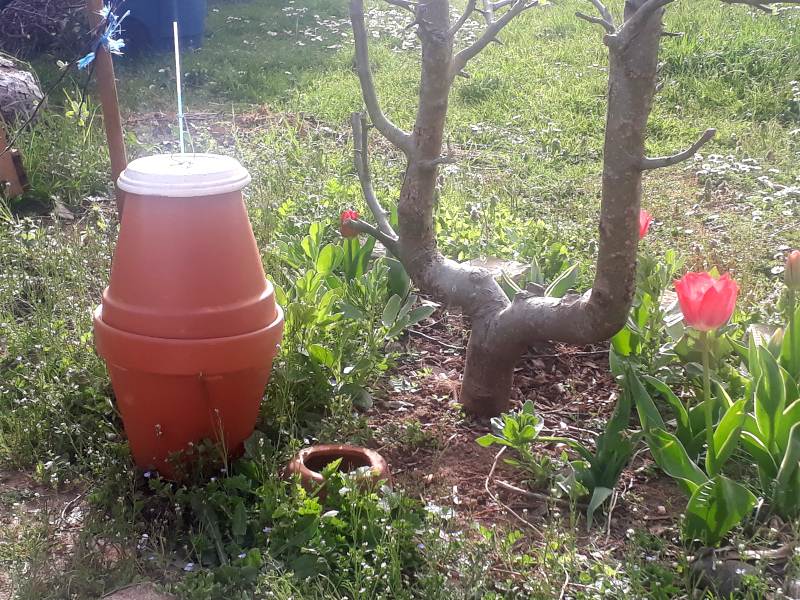
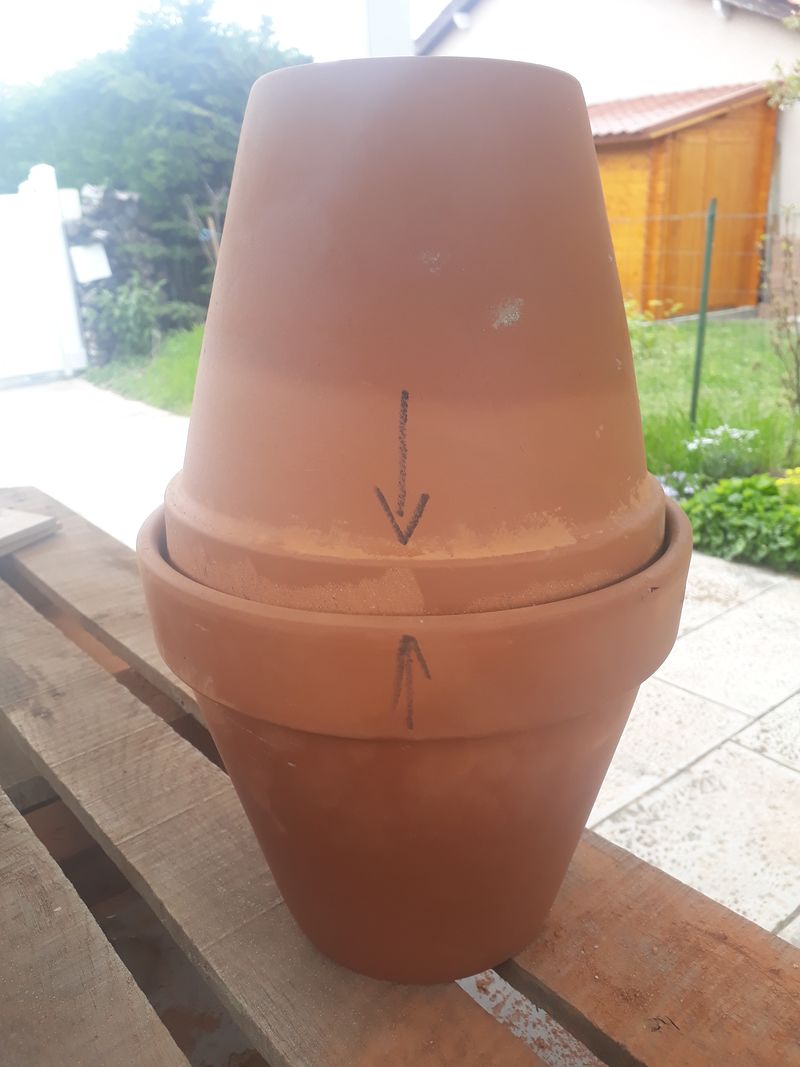
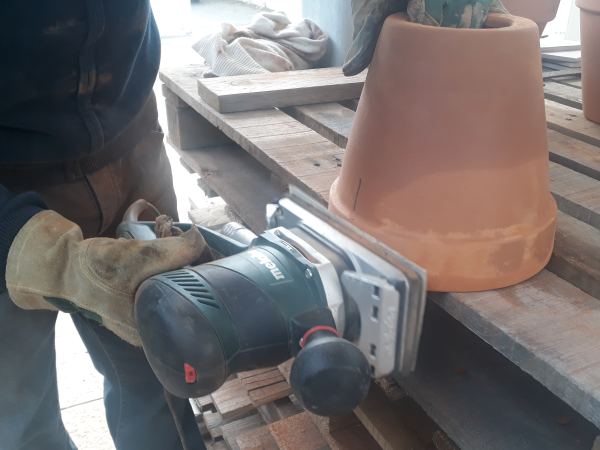
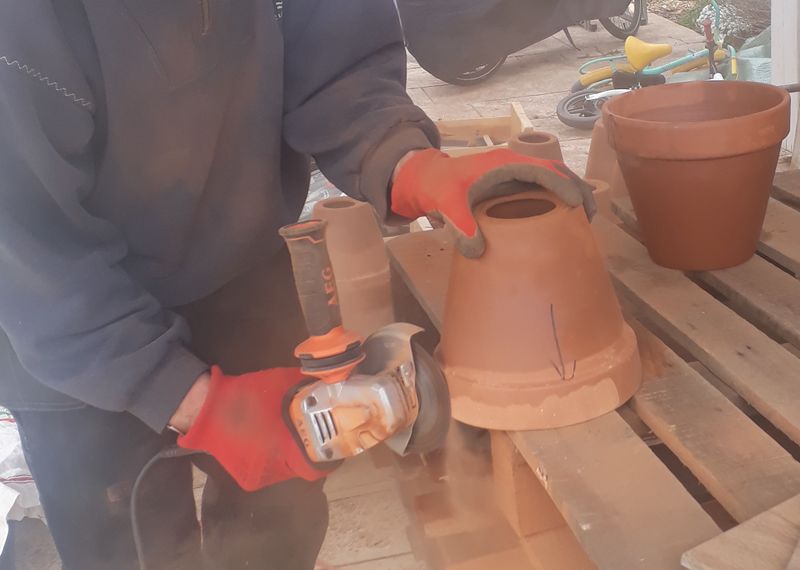
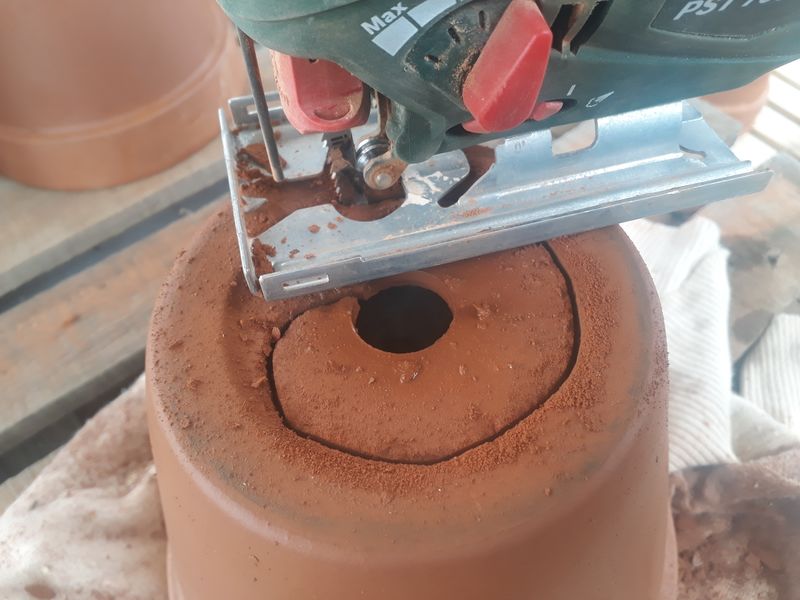
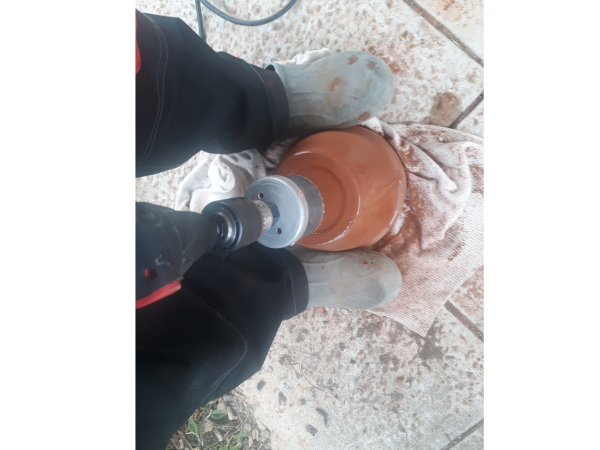
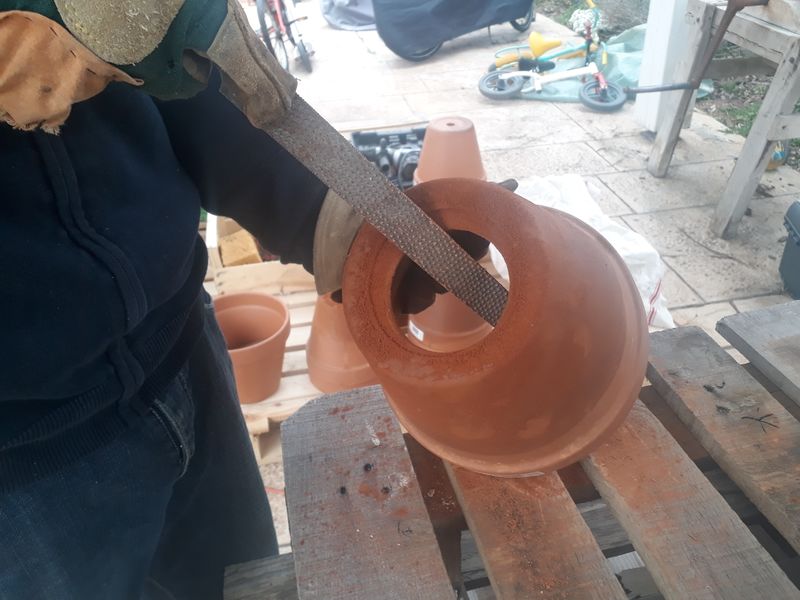
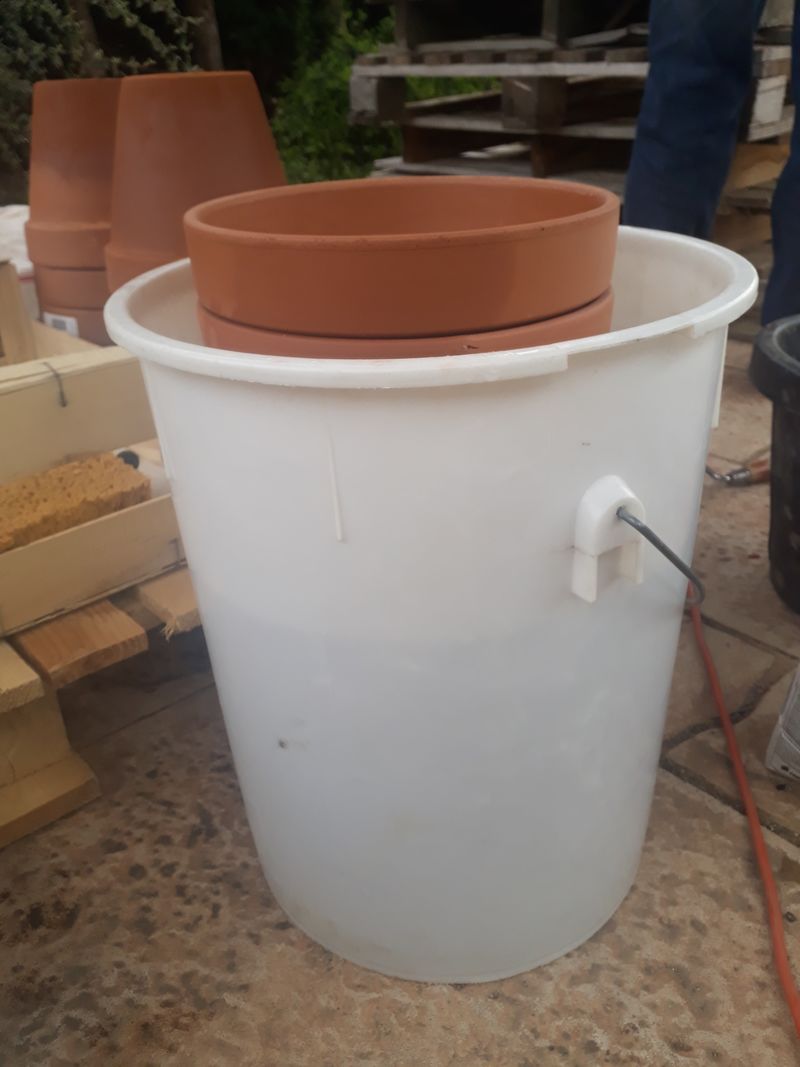
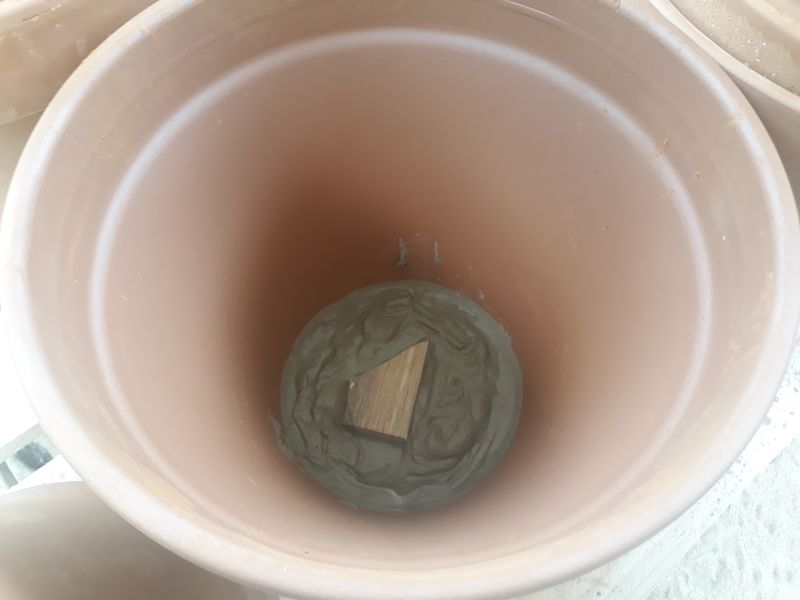
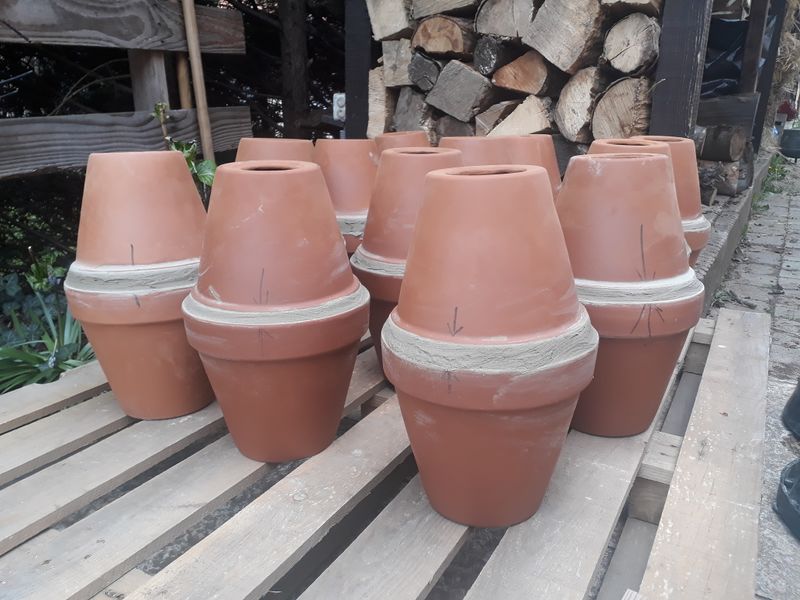
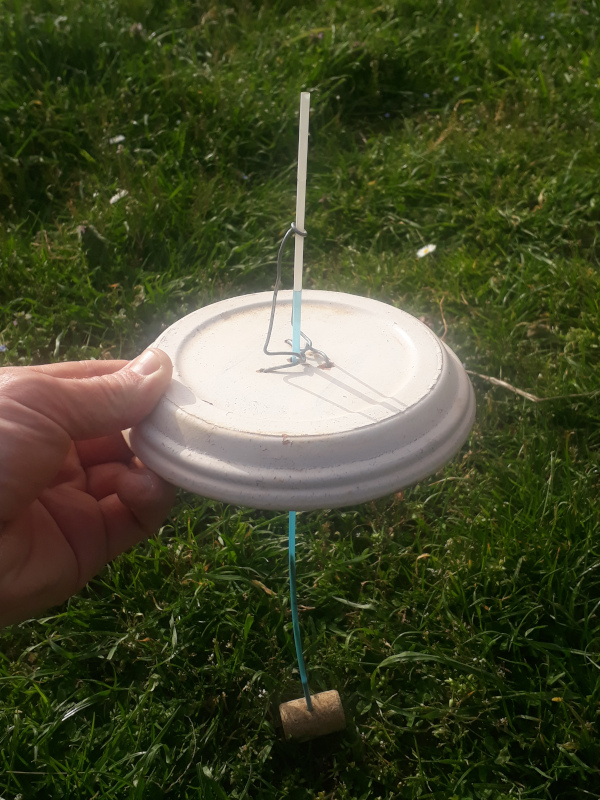
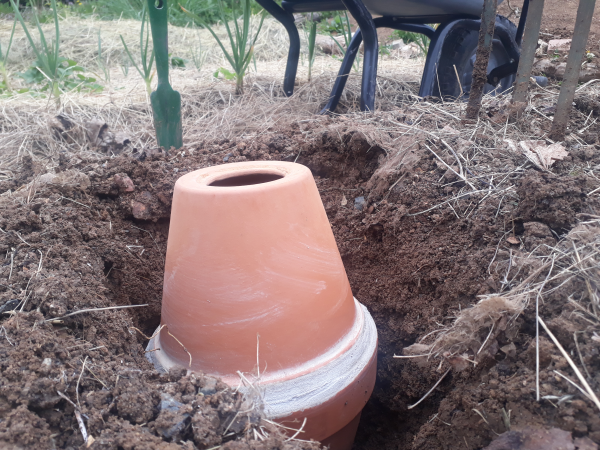
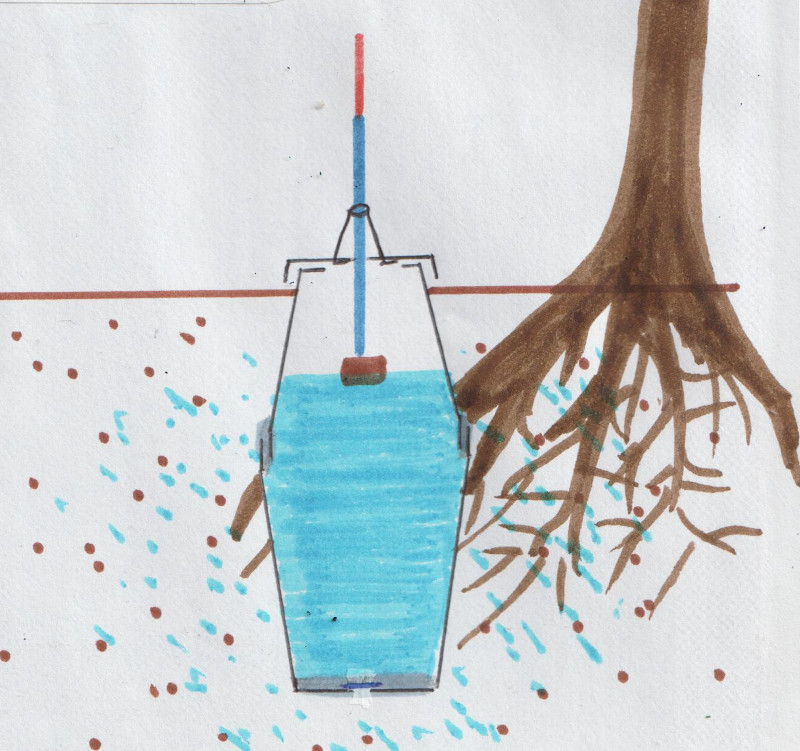
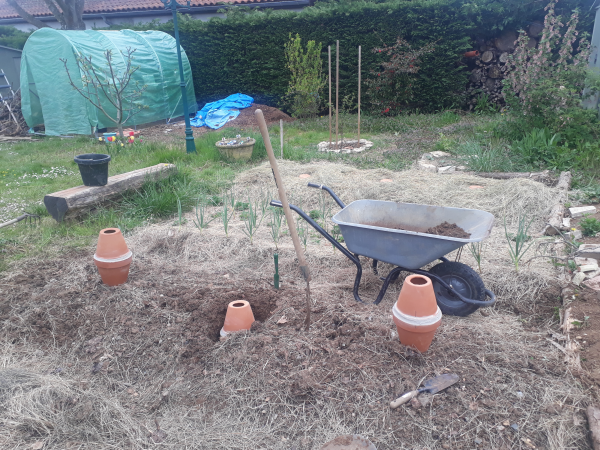
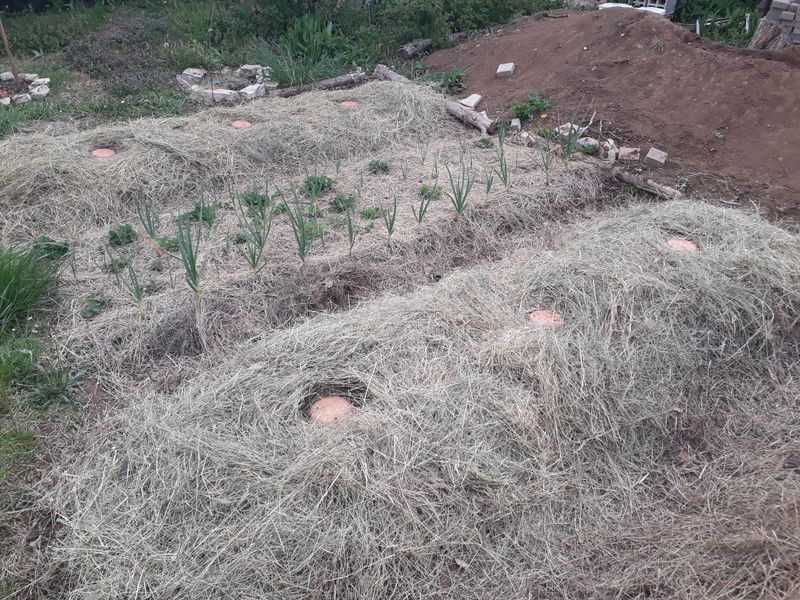
 Français
Français English
English Deutsch
Deutsch Español
Español Italiano
Italiano Português
Português